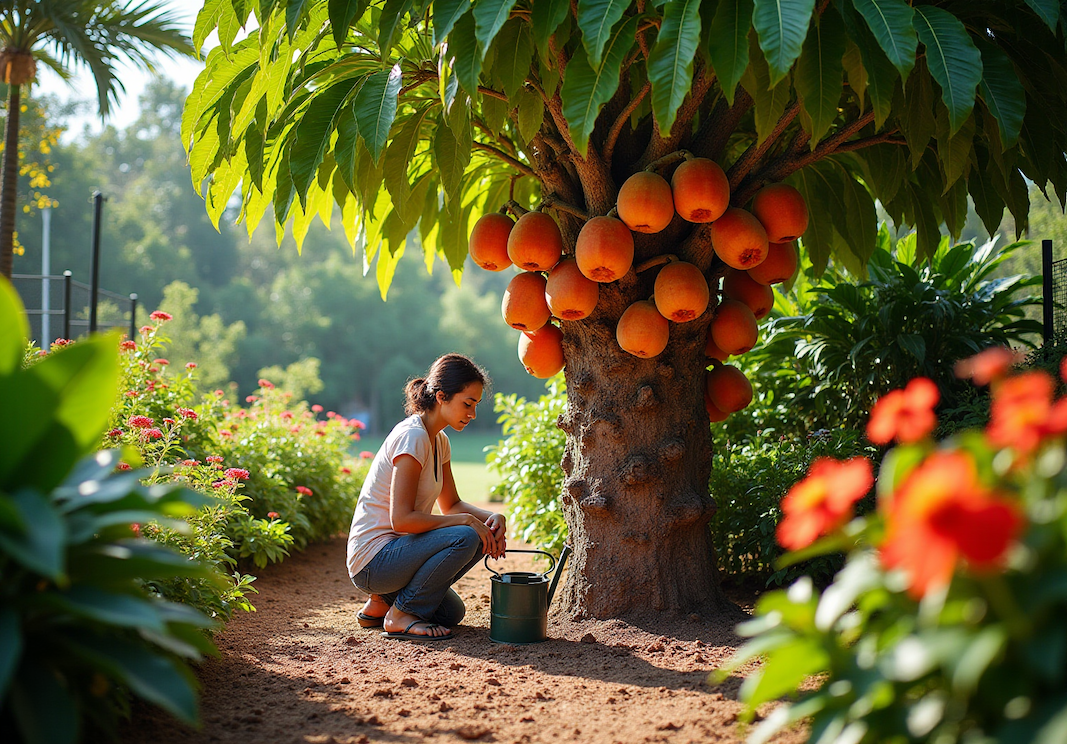
Key West Mamey Sapote Tree: Steps for Successful Planting
Share
The allure of the Key West mamey sapote tree is rooted not only in its delicious, creamy fruit but also in the meticulous care it requires to thrive. For those interested in cultivating this tropical treasure, understanding its specific growth conditions and maintenance needs is essential.
With numerous factors to consider—such as optimal sunlight, soil preparation, and pest management—what are the keys to ensuring a successful planting and a bountiful harvest?
This guide explores the critical steps necessary for planting and nurturing the mamey sapote tree, unlocking the potential for a fruitful garden filled with this exotic delight.
Thinking about growing a Sapote Tree in your garden?
Explore Key West Mamey Sapote Tree for dale at Everglades Farm - shipped directly from Florida.
1. Understand the Key West Mamey Sapote Tree
The key west mamey sapote tree (Pouteria sapota) is a tropical fruit plant celebrated for its creamy, sweet pulp and vibrant salmon-hued interior. Thriving in warm climates, it is ideally suited for USDA zones 10-11. Under optimal conditions, sapote plants can reach heights of up to 40 feet and yield between 200 to 500 fruits annually. To ensure successful growth and fruit production, the key west mamey sapote tree requires full sun exposure and well-draining soil enriched with organic matter. Notably, they are sensitive to frost, making them best suited for regions with minimal cold exposure.
Proper site selection and environmental management are crucial, as the key west mamey sapote tree thrives when positioned in locations that avoid flooding and low temperatures. It is recommended to space the plants 15 to 20 feet apart with 25 to 30 feet between rows to facilitate adequate growth. Understanding these growth conditions will help you create an for your sapote plant to flourish. Additionally, consider using Everglades Farm's professional-grade fertilizers to support the healthy growth of your sapote and other tropical plants.
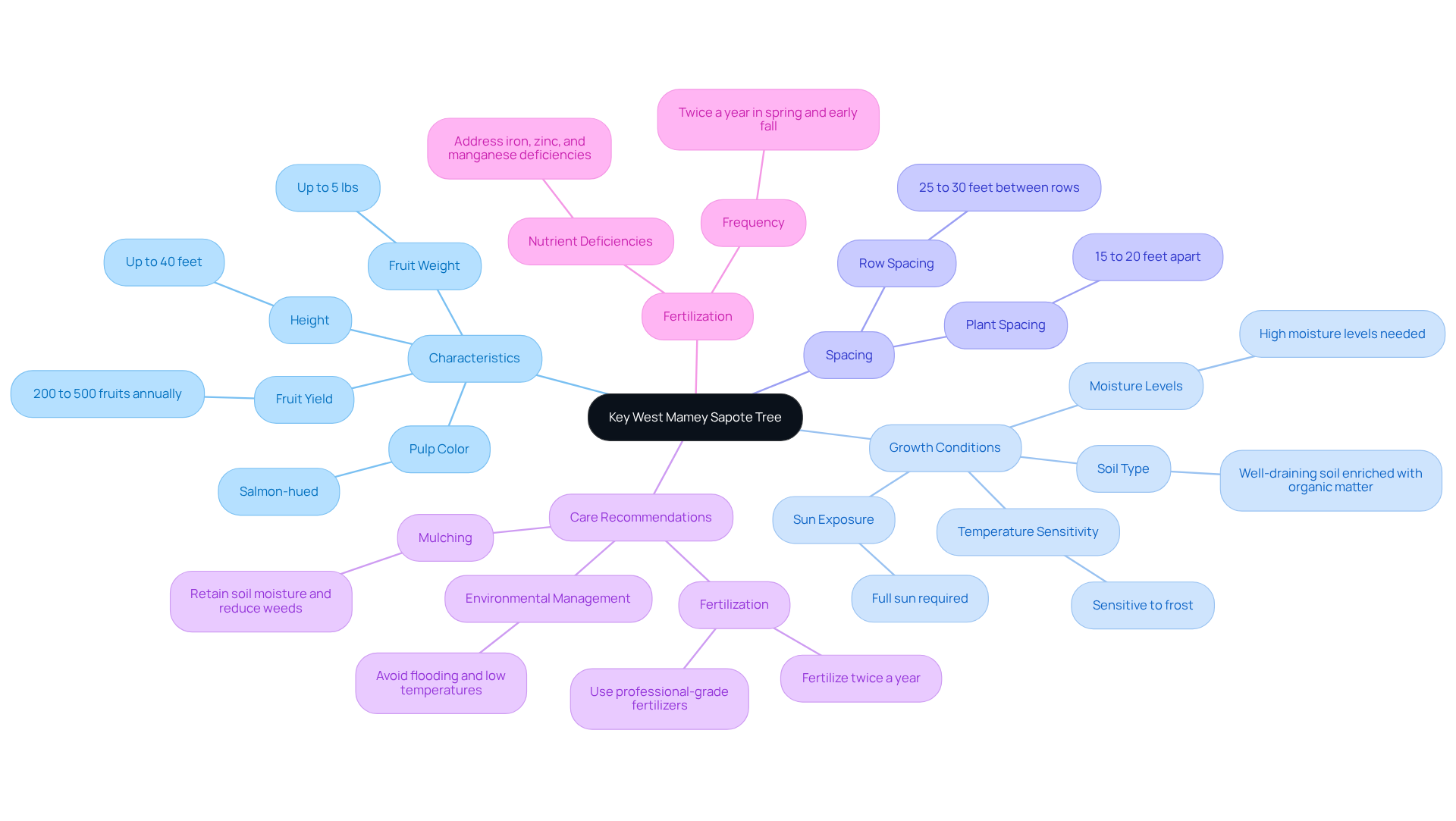
2. Select the Right Location and Prepare the Soil
Selecting the appropriate spot for your key west mamey sapote tree is essential for its prosperity. Aim for a location that receives at least 6 to 8 hours of direct sunlight each day, as this is crucial for optimal growth and fruit production. Additionally, choose an area that is sheltered from strong winds and free from frost pockets, which can harm young plants. Young fruits are particularly , so consider planting them after the final frost date in your region.
The ideal ground for the key west mamey sapote tree is well-draining, with sandy loam or loamy types being preferred. The ground pH should be somewhat acidic to neutral, ideally between 6.5 and 7.5. To prepare the soil, amend it with organic compost to improve fertility and drainage. This step is vital for creating a nutrient-rich environment that supports healthy root development. Regular watering is also crucial to avoid drought stress, as these fruits are extremely vulnerable to dry conditions. When planting, dig a hole that is three times the diameter and twice the depth of the root ball. This provides sufficient room for the roots to grow and establishes a solid base, preparing the environment for a flourishing fruit plant.
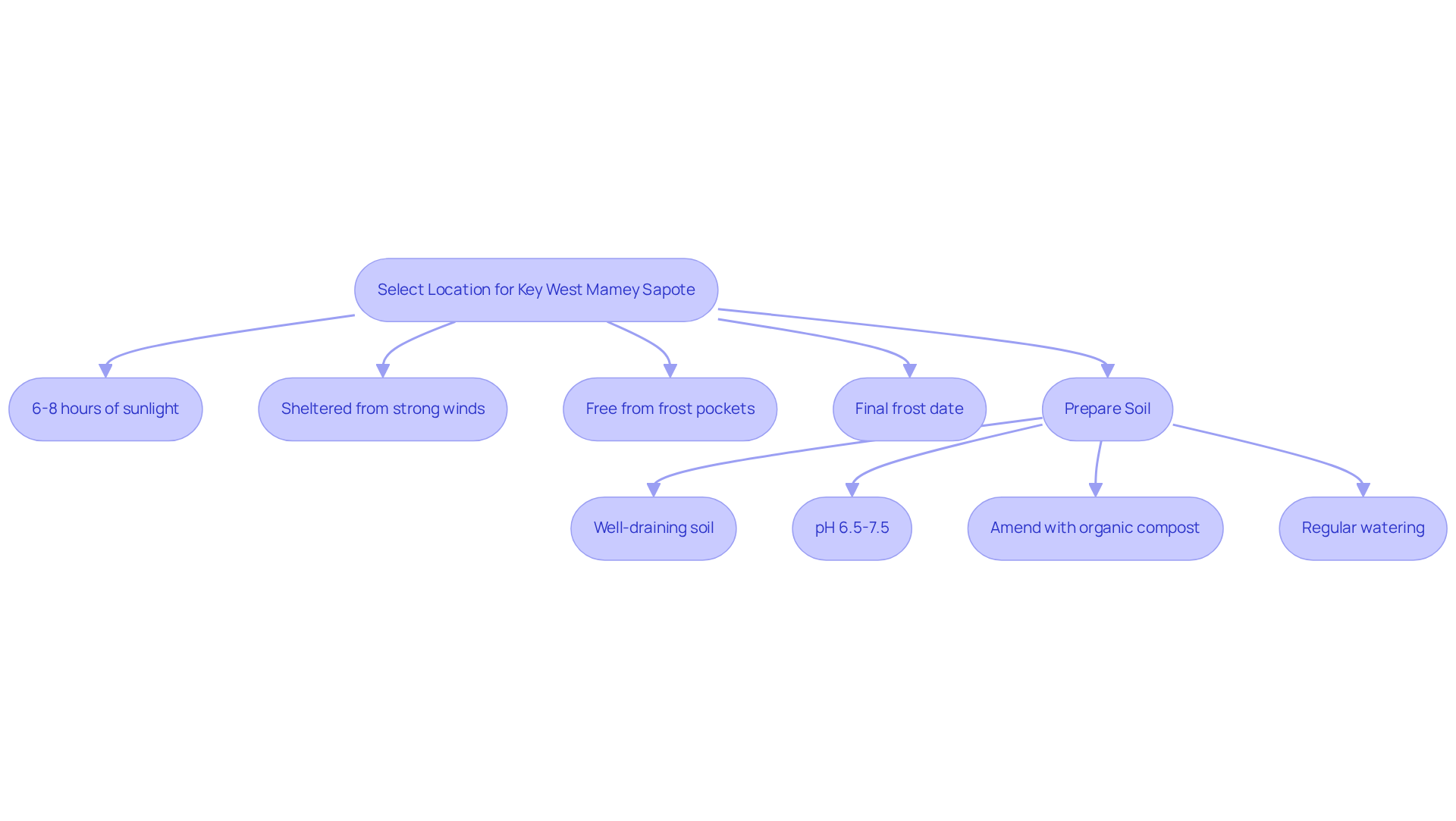
3. Plant the Mamey Sapote Tree Correctly
- Gently remove the plant from its container, ensuring minimal disturbance to the roots.
- Position the plant in the center of the prepared pit, making sure that the upper part of the root ball is level with the surrounding earth.
- Refill the hole with the initial soil, compacting it softly to eliminate any air pockets.
- Water the plant thoroughly after planting to help settle the ground around the roots; newly planted specimens require approximately during a typical growing season.
- A light irrigation of three to five gallons is recommended immediately after planting to further eliminate air pockets around the roots.
Following this, apply a 2-inch layer of mulch around the base of the plant, ensuring it does not touch the trunk to prevent wood rot and insect infestations. This mulch layer will help retain moisture and control weeds, which is crucial for the plant's adaptation to its new environment. Additionally, check the soil moisture at a depth of 6-12 inches to ensure effective watering. These practices not only promote healthy development but also represent expert advice for nurturing tropical fruit plants like soursop and mamey sapote.
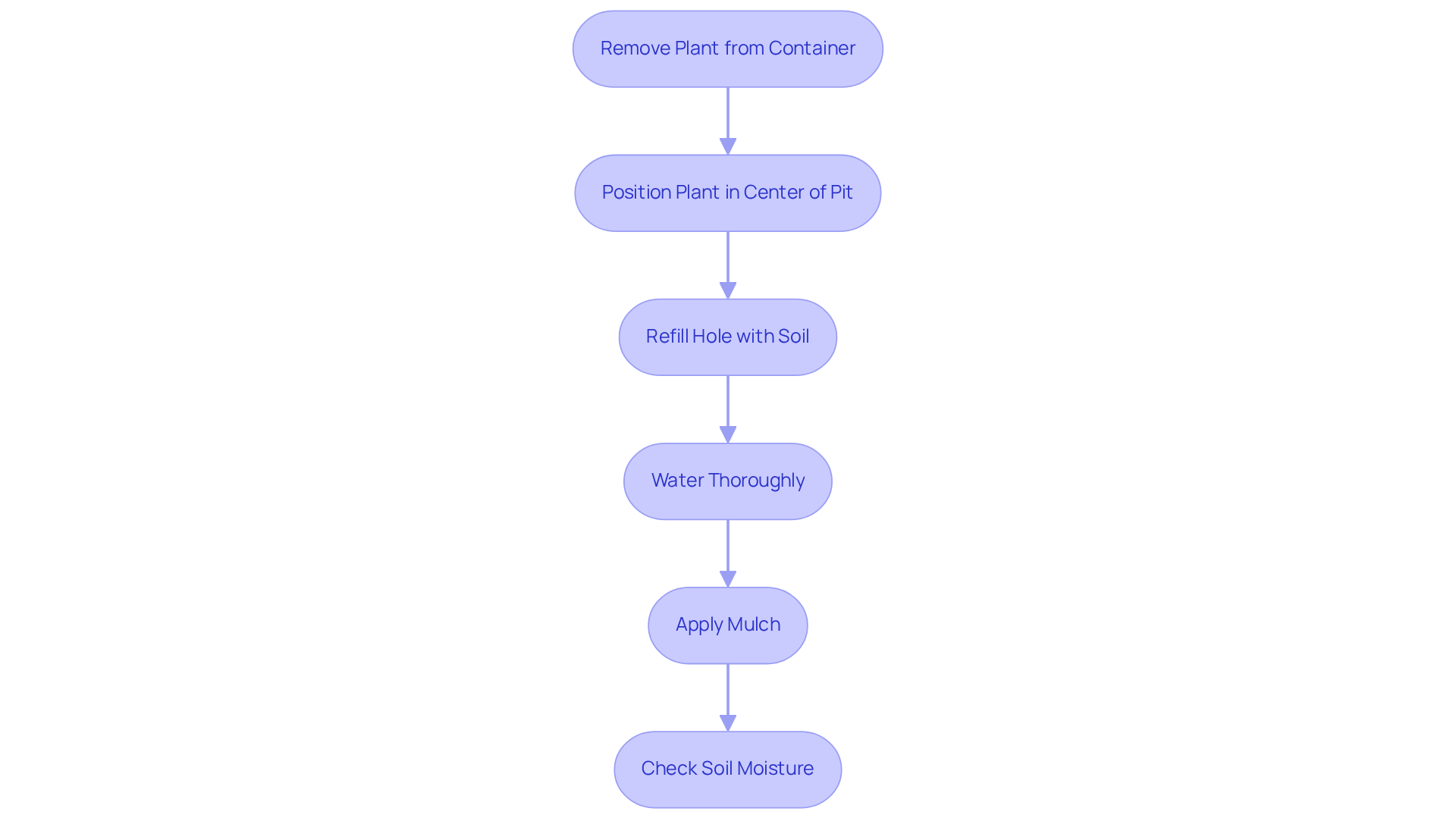
4. Maintain and Care for Your Mamey Sapote Tree
To ensure the health and productivity of your Mamey Sapote tree, adhere to the following care guidelines:
- Watering: every other day for the initial few months after planting. Transition to watering once or twice a week, allowing the soil to dry slightly between waterings. Adult plants should receive water one to two times weekly, supplying approximately one inch of moisture during arid conditions. This practice promotes robust growth and sustains the tree's vitality.
- Fertilization: For young plants, apply a balanced fertilizer every 2 to 3 months during the growing season. As the plant matures, decrease the frequency to 3 to 4 times annually, ensuring that fertilization occurs at the beginning and middle of the growing season. This strategic approach fosters healthy growth and enhances fruit production, allowing you to enjoy a bountiful harvest.
- Pruning: Conduct annual pruning to remove dead or damaged branches and to shape the plant, facilitating better air circulation and light penetration. This practice is crucial for maintaining the plant's health and preventing disease, ultimately leading to a more fruitful tree.
- Pest and Disease Monitoring: Regularly examine your plant for signs of pests and diseases, such as the Cuban May beetle and anthracnose fungus. Timely measures are essential to alleviate any problems that could arise, ensuring the durability and health of your fruit plant.
- Environmental Conditions: The trees flourish in temperatures ranging from 70°F to 85°F (21°C to 29°C) and require full sunlight for a minimum of 6 to 8 hours daily. By creating optimal environmental conditions, you can significantly enhance the growth and productivity of your Mamey Sapote tree.
By following these maintenance steps, you will foster healthy growth and maximize fruit production, allowing you to savor the unique flavors of Mamey Sapote in your garden.
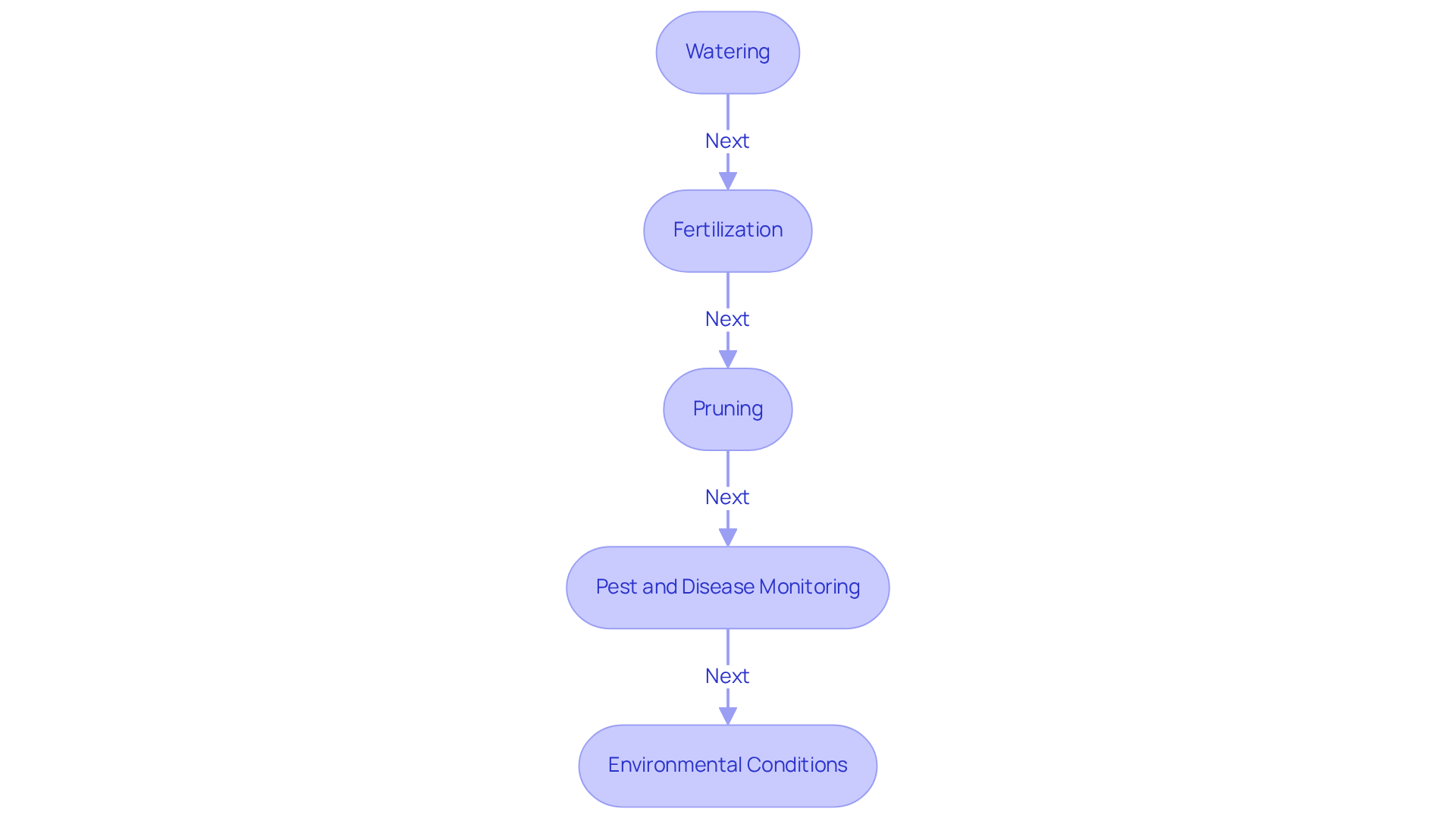
Conclusion
Successfully cultivating a Key West Mamey Sapote tree requires an understanding of its unique needs and adherence to specific planting and care techniques. This tropical fruit tree, renowned for its delicious pulp and vibrant color, flourishes in warm climates with ample sunlight and well-draining soil. By ensuring optimal conditions—such as proper spacing, soil preparation, and diligent maintenance—gardeners can reap the rich rewards of this remarkable plant.
Key points emphasized throughout the article highlight the significance of site selection, soil quality, and routine care practices. From selecting a sunny location to implementing effective watering and fertilization strategies, each step is essential for nurturing the sapote tree. Regular monitoring for pests and diseases, coupled with annual pruning, further bolsters the tree's health and productivity, paving the way for a bountiful harvest.
In conclusion, the journey of growing a Key West Mamey Sapote tree encompasses not only the act of planting but also the creation of an environment where this tropical gem can thrive. By applying the insights and techniques discussed, gardeners can take pride in their ability to cultivate this unique fruit tree, ultimately enriching their gardens and savoring the sweet rewards it offers. Embrace the opportunity to nurture this exotic plant and enjoy the delicious fruits of your labor.
Grow Your Own Tropical Paradise Today!
Start now with Everglades Farm and cultivate the delicious Mamey Sapote in your backyard.
👉🏻 Explore Mamey Sapote Trees Collection
Frequently Asked Questions
What is the key west mamey sapote tree?
The key west mamey sapote tree (Pouteria sapota) is a tropical fruit plant known for its creamy, sweet pulp and vibrant salmon-hued interior.
What climates are suitable for growing the key west mamey sapote tree?
The tree thrives in warm climates, specifically in USDA zones 10-11.
How tall can the key west mamey sapote tree grow?
Under optimal conditions, the sapote tree can reach heights of up to 40 feet.
How many fruits can a key west mamey sapote tree produce annually?
The tree can yield between 200 to 500 fruits each year.
What are the ideal growing conditions for the key west mamey sapote tree?
The tree requires full sun exposure and well-draining soil enriched with organic matter. It is also sensitive to frost and should be planted in regions with minimal cold exposure.
How should the key west mamey sapote tree be spaced when planting?
It is recommended to space the plants 15 to 20 feet apart and maintain 25 to 30 feet between rows to allow for adequate growth.
What should be considered for the site selection of the key west mamey sapote tree?
Proper site selection is crucial, as the tree thrives in locations that avoid flooding and low temperatures.
What type of fertilizers can support the growth of the key west mamey sapote tree?
Using professional-grade fertilizers, such as those from Everglades Farm, can support the healthy growth of the sapote and other tropical plants.


